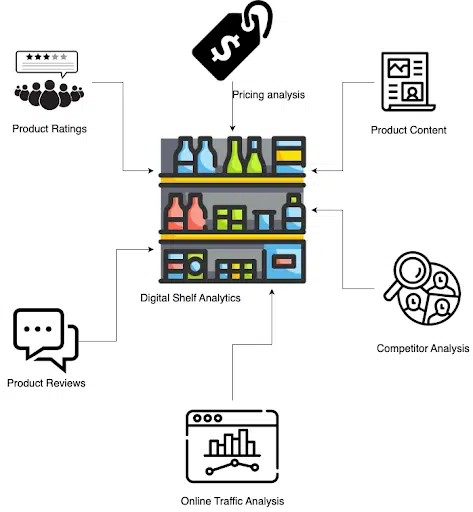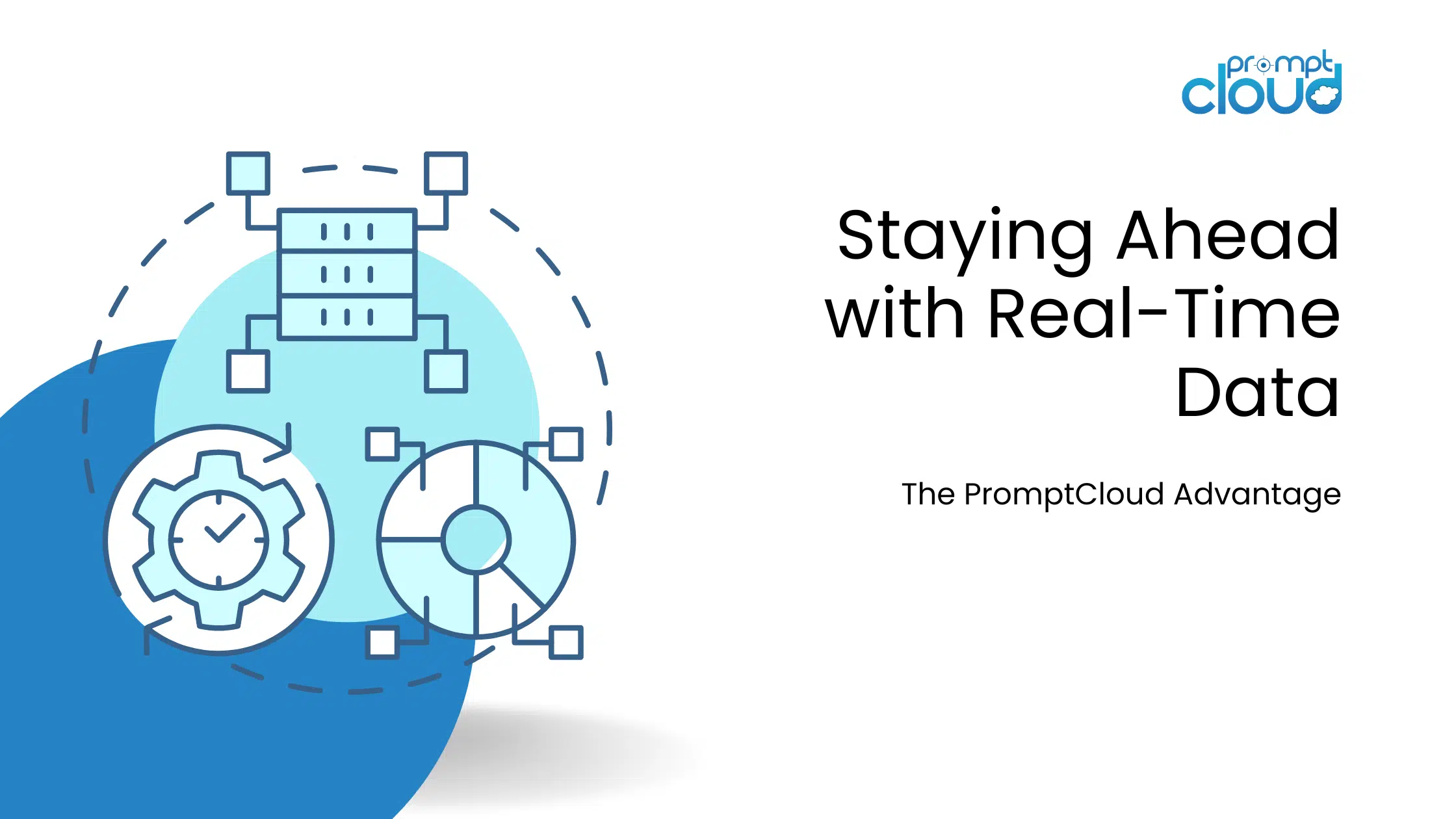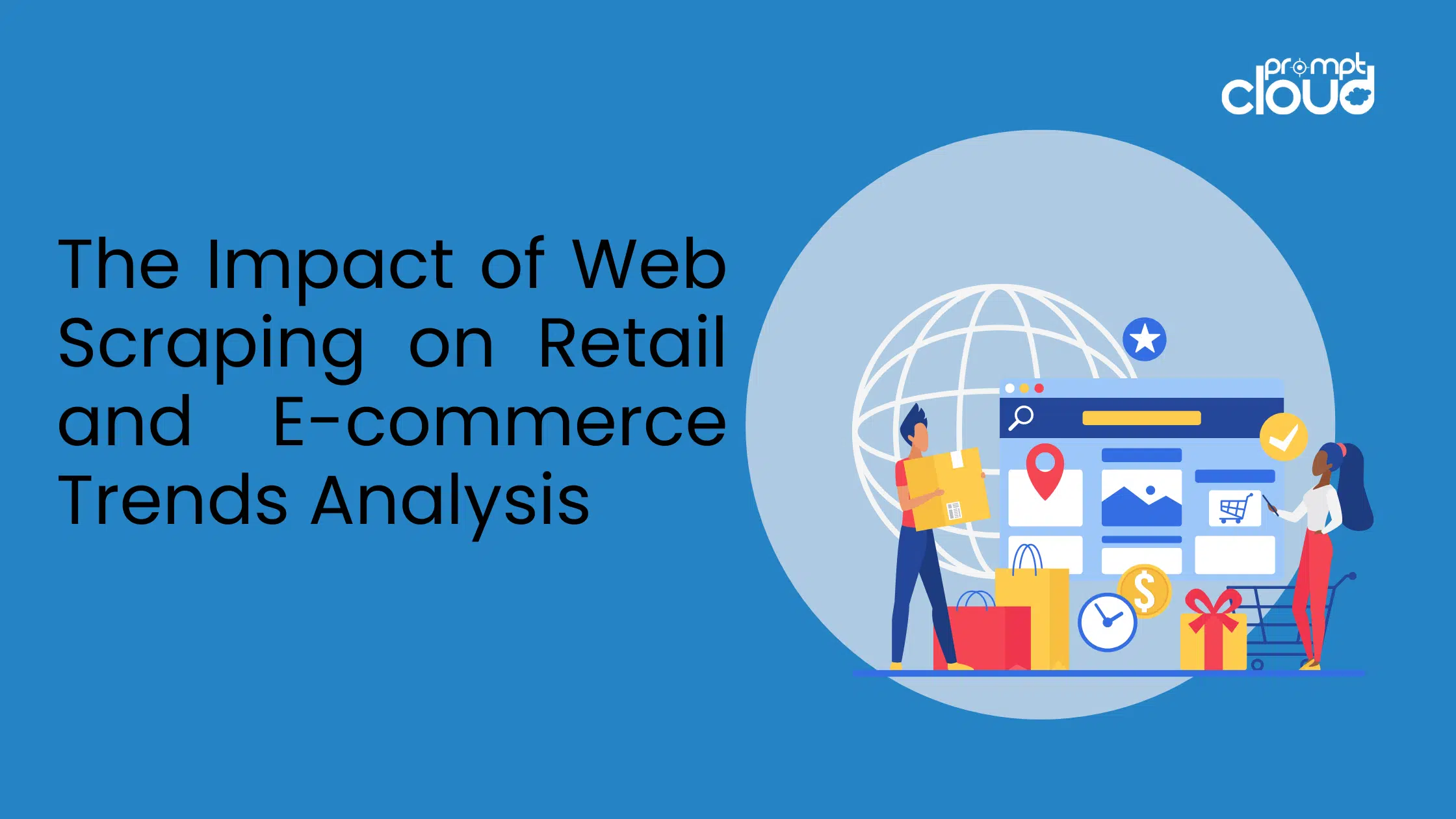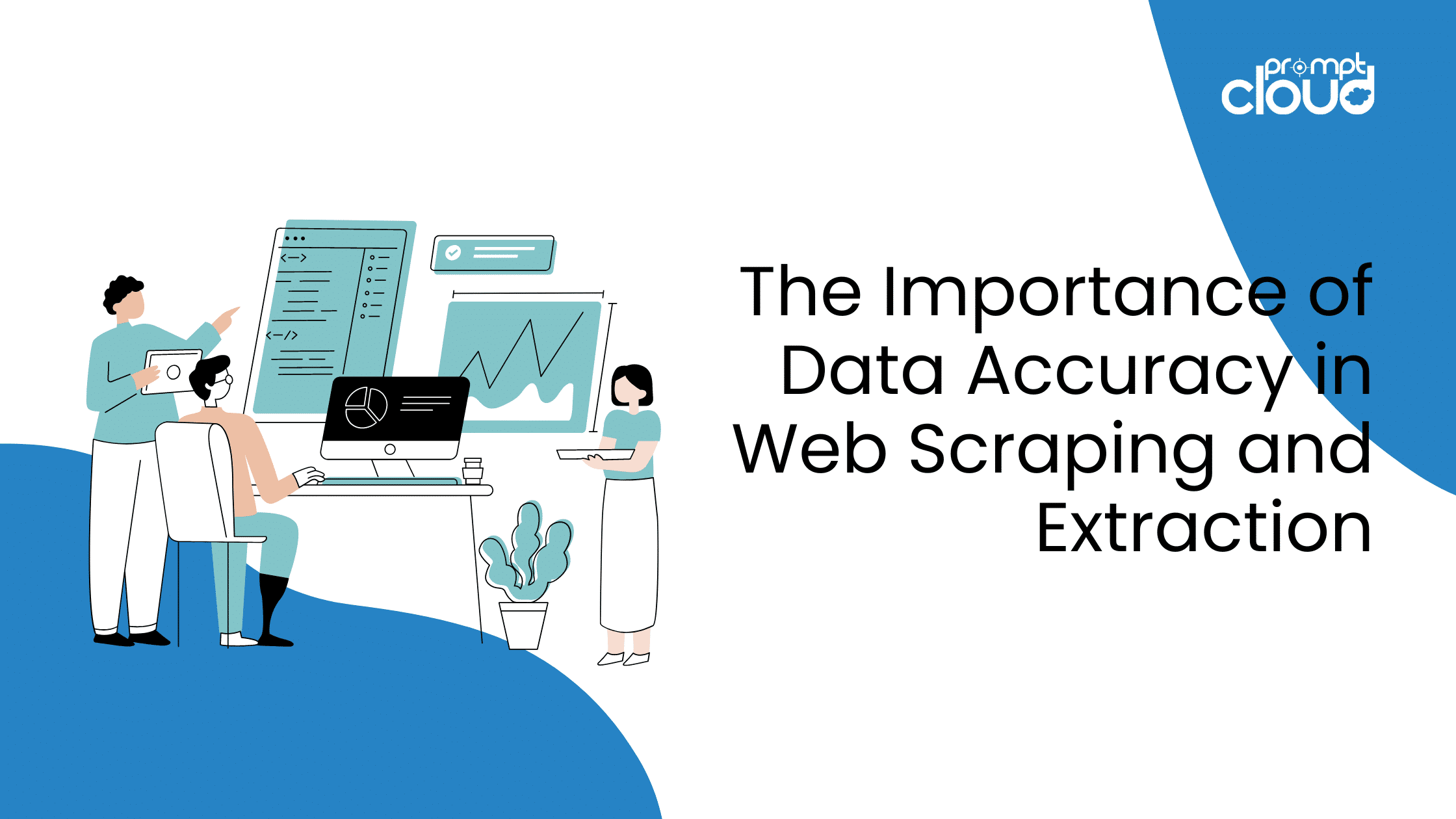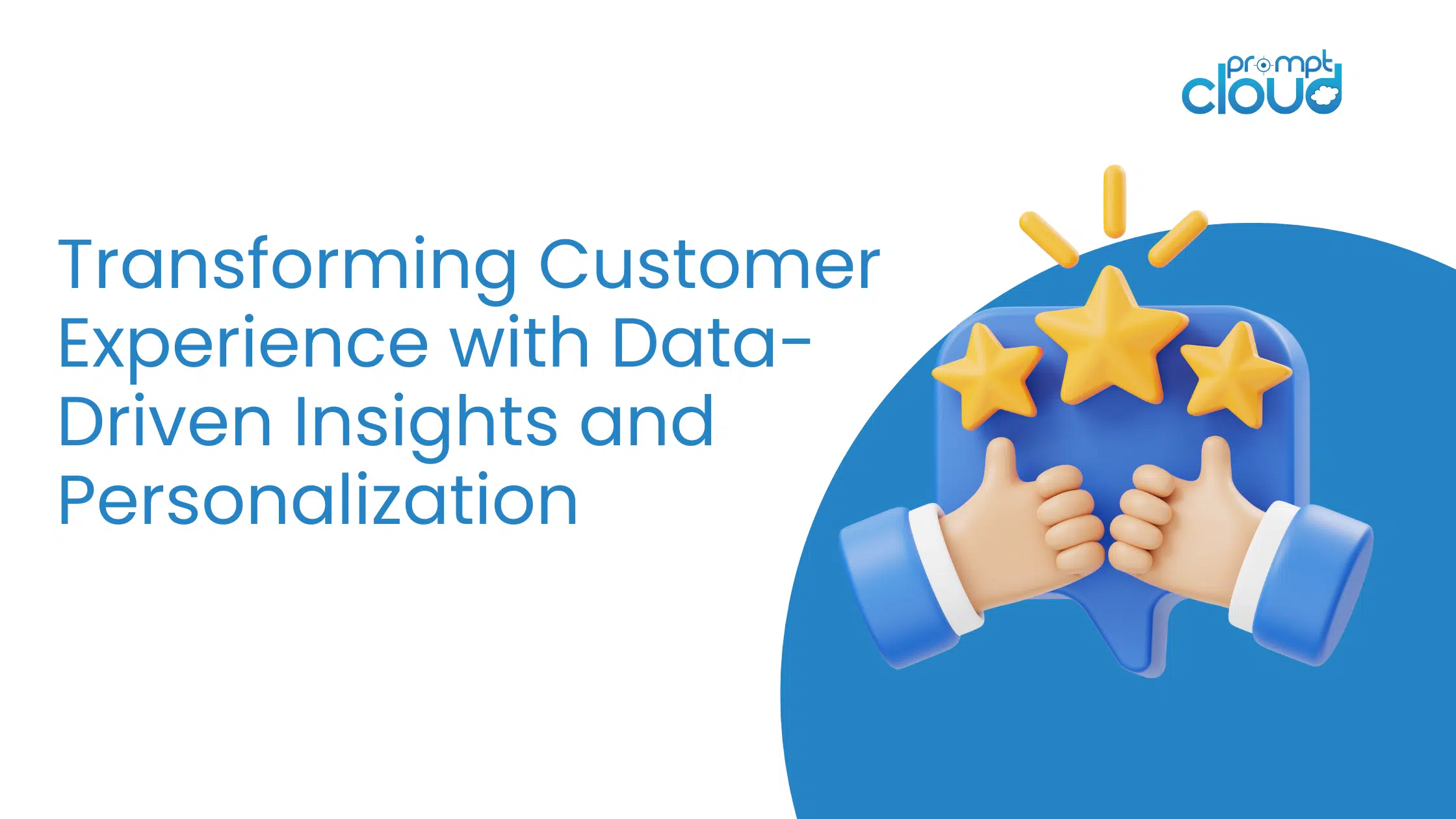
Abhisek Roy
- June 22, 2023
- Blog
The practice of collecting, sorting, analyzing, and consuming data related to the performance of products on a digital shelf (such as an e-commerce platform) is referred to as Digital Shelf Analytics. It is a fancy term coined for an act that was being performed by online retailers since people started shopping on the internet.
The only difference is that companies have a lot more data to sift through today and that many of the processes are highly automated to absorb changes happening every second. The practice involves monitoring metrics such as visibility, positioning, related content, pricing, and customer engagement of products displayed on a website. For example, you may want to analyze:
- Where a product is placed when a user searches for certain keywords. This refers to the search results page number it appears in, or the area on the page it appears (top, middle, or bottom).
- How many customers click on the product and what percentage of those convert to a purchase?
- Whether there are customers who hover over the product but leave without checking its product page.
- What are the areas on the product page where a customer usually interacts– this can be comments, details, ratings, etc and what is the stage where a customer usually abandons the product even after going through the product page?
- Price analysis and ensuring sellers are not selling your product below MAP (minimum advertised price).
As you may imagine, a digital shelf is just a webpage in which products are displayed to be sold online. This can refer to a retail website, an app, a marketplace like Amazon, and other evolving digital forums. In simple words, Digital Shelf Analytics provides insights into how a product is being perceived, how it is performing, and what is holding it back from higher sales figures.
Building Blocks of Digital Shelf Analytics
Digital Shelf Analytics enables retailers and brands to find information unavailable to plain sight that would help in enhancing the overall customer experience on a product page. It can help sell products that may be top-notch but don’t sell well online. Some of the aspects of Digital Shelf Analytics are:
Product Visibility:
Just like content is ranked based on SEO, product visibility is ranked based on where it appears in search results. While some search results in a digital shelf may be sponsored, others rank high due to better customer ratings, detailed descriptions, loads of images, and multiple first-hand reviews. Comparing the visibility of your product with your competitor’s is the most basic level of Digital Shelf Analytics that an online retailer should undertake.
Product Content:
On a digital shelf, descriptions, images, and videos make products stand apart. Unless these are accurate and appealing, the product will find few buyers. For instance, imagine you go to a product page, but it has just one image from a certain angle, or its images don’t load. Then you open another product page that has images from every angle which include measurements, and a video on how it is used. It is easy to understand which one will sell more. Analyzing product content from different sources through scraped data using DaaS tools like PromptCloud is a must to ensure that users don’t drop off from your product pages.
Pricing Analysis:
Digital Shelf Analytics also helps sellers in comparing the prices of different items against their competitors. Prices may fluctuate based on season, change in demand, sale events, and more. This is why it is a continuous exercise to compare prices across different avenues and ensure your products are at a competitive advantage.
Reviews, ratings, feedback:
Getting new customers is easier when you have good feedback from your older ones. Analyzing your reviews, ratings and customer feedback regularly is critical to crack your digital shelf performance. At the same time, you would also want to scrape data from other sellers to understand where they are excelling or falling short so that you can incorporate those in your products and services.
Traffic Sources:
If all your customers are coming from sponsored links, that is a sign that your product page is not SEO optimized to drive organic traffic. Digital Shelf Analytics also involves tracking your traffic sources and making improvements to your product content to have more organic conversions. Creating relevant and SEO-optimised content is easy once you scrape data from the web to find pointers among the top listed products on a search page, and incorporate those in your product listing.
Add on Factors in Digital Shelf Analytics
Along with the data points mentioned above, you may also need to incorporate competitor analysis and conversion rate optimization as part of your Digital Shelf Analytics project. The first one helps you track campaigns, new product launches, promotions, and sale events by your competitors. Analyzing competitor data can also help you figure out if you are missing anything in the product lineup, whether your items are in line with the industry standards, and if you are providing any extra features that may help your product pages stand out.
The second one keeps track of the percentage of users who open your product page and make a purchase. You can compare this to competitor data (that you can get by scraping the web) to find out where you stand. A low conversion rate can harm your bottom line even if you are having high visibility. You will need to perform further analysis to find out why customers leave your page without making a purchase. Problems can range from missing details to higher-than-average pricing. All of this can increase the online engagement of your products on a digital shelf
Our team at PromptCloud can help you scrape data such as pricing information, product page details, product lineup, and search results so that you can perform digital shelf analysis and improve your sales in the long term. However, even with all the data, coming up with a strategy-driven plan might be difficult. Due to this, we have come up with a targeted tool called 42 signals that aims to use computer intelligence to decrypt complex eCommerce data.
It can be used as a tool to solve specific issues that are faced by companies selling their products online such as MAP violations, price benchmarking, product assortment, and competitive analysis. It is a must-have tool for B2B and B2C brands along with marketing and sales professionals.
Sharing is caring!





